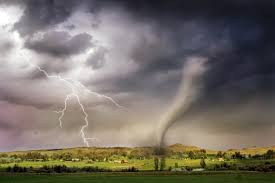When the Earth shook
Target Learning Outcome
1. Learns natural calamities like Earthquakes, floods etc.
3. Awareness about what can be done without a warning about
disasters.
4. Understand difficulties faced by people during floods,
earthquakes
5. Learns who helps people during natural calamity.
Q1. What to do if there is an earthquake?
during an Earthquake-Indoorss1. A.Duck B.Cover C.Hold
2. Stay There! Do NOT Run Outside
3. Stay Calm & Remember the Phase, "Duck, Cover, and
Hold"
1. Duck - And Look for Cover
2. Cover - Under a Sturdy Desk or Table
3. Hold Onto the Furniture Leg Until Shaking Stops
During an Earthquake-Indoorss
◆ Face Away from Windows◆ Stay Clear of Tall Objects that May Topple Over
◆ Watch for Falling Objects Outdoors
◆ Get into the Open
◆Stay Clear of Buildings, Power Lines & Trees
◆ If Driving: Stop If Safe, But Stay Inside the car.
Avoid Stopping
Under Trees, Light Posts, Power Lines, or Signs
◆ Stay Away from Bridges, Overpasses & Tunnels
Q2.Make a List of Natural Disasters
1. Volcanic eruption
2. Earthquake
3. Cyclone or Hurricane¹
4. Avalanche
5. Flood
6. Drought
7. A forest fire or Bushfire
Q3.Make a List of Man-Made Disasters.
Structural Collapse
Transportation Accidents
Oil Spill
War
Terrorist Attacks
Deforestation
Fire Accidents
Industrial Accidents
is so strong that the ground splits apart.
Q 5. What is Cyclone, Hurricane, Tornado or Typhoon?
Ans. A Cyclone is a fierce storm with storm winds that spin aroundit is in a giant circle. During a cyclone trees can be uprooted, and
buildings can be destroyed and cars can be overturned.
mountainside. Avalanches happen very suddenly and can move as
fast as a racing car up to 124mph.
Q 7. What is Drought?
Ans. A drought is the lack of rain for a long time.
Q 8. What is Forrest Fire or Bushfire?
Ans. Fires can burn out of control in areas of forest or bushland.
Q 7. What is Drought?
Ans. A drought is the lack of rain for a long time. Q 8. What is Forrest Fire or Bushfire?
Ans. Fires can burn out of control in areas of forest or bushland. Fires are caused by lightning, sparks of electricity or careless
people. Wind may blow a bushfire to areas where people live.
Q 9. Who all helped at such a time? Make a list?
Ans. The list of the people who had provided help at that time is
as follows:
(i) The neighbours helped each other.
(ii) People from the cities.
(iii) The local leaders.
(iv) The political leaders.
(v) Various non-government organizations of that area.
(vi) Doctors and nurses of the hospitals of that place.
(vii) Few shopkeepers
Q 9. What kind of people would they need after the earthquake?
Ans. At times when people have lost their homes and their
belongings, they would need the following help:
(i) Tent/canvas to prepare their huts
(ii) Clothes
(iii) Food, water, milk
(iv) Medicines and first aid treatment
Q10. In the event of an earthquake, what steps should we follow?
When the ground starts shaking, remember these simple steps to stay safe:
Drop, Cover, and Hold On:
- Drop to the ground immediately.
- Cover your head and neck with your arms, and seek shelter under a sturdy piece of furniture like a table or desk.
- Hold On to the furniture until the shaking stops.
Stay Away from Windows and Glass:
- Move away from windows, glass furniture, and other objects that could shatter and cause injury during the shaking.
Avoid Elevators and Stairs:
- Elevators may malfunction or get stuck during an earthquake, and stairs could be damaged. Stay away from them during the shaking.
Be Prepared for Aftershocks:
- Aftershocks are smaller earthquakes that can happen after a big one. Be prepared for them and follow the same safety steps.
Stay Calm and Listen to the Instructions:
- Don't panic. Stay calm and listen to instructions from adults or authorities. They will guide you to safety.









